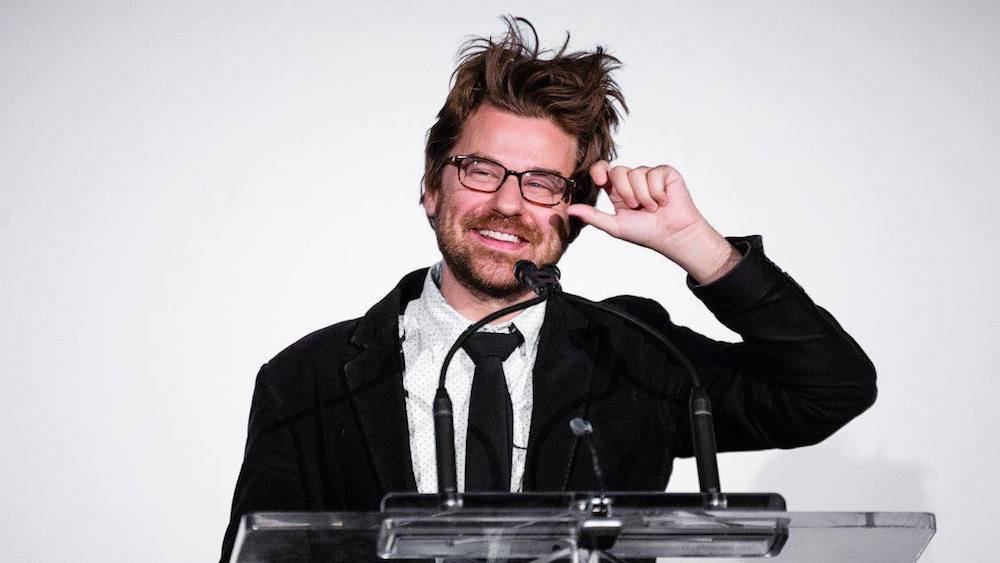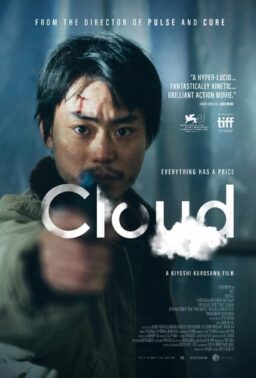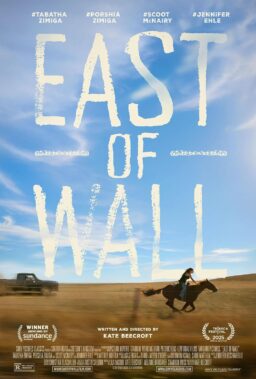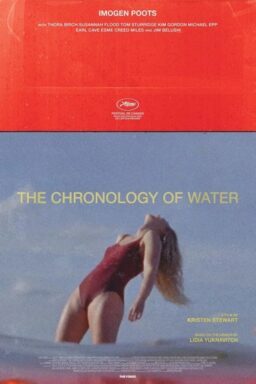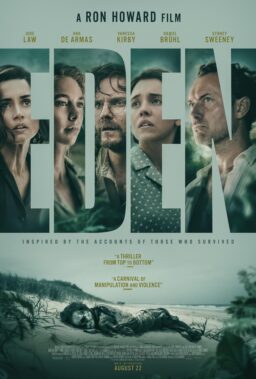No modern filmmaker nurtures the soul quite like Stephen Cone. His movies are timeless slices of life that also speak to the present moment, often juxtaposing the perspectives of people from different generations as they come of age. There are no heroes and villains in his pictures, only complicated, well-meaning individuals—some of whom are more lost than others. Ever since I saw Cone’s extraordinary 2011 film, “The Wise Kids,” about various members of a Southern Baptist community, I have interviewed the director about each of his subsequent features: 2013’s haunting ode to theatre, “Black Box”; 2014’s arrestingly intimate “This Afternoon”; and 2015’s Altmanesque marvel, “Henry Gamble’s Birthday Party.” His latest picture, “Princess Cyd,” may be his most acclaimed picture to date, and easily ranks among the best films I’ve seen this year. It stars Rebecca Spence as Miranda, a middle-aged novelist who agrees to have her teenage niece, Cyd (Jessie Pinnick), stay with her for the summer at her home in Chicago. Cone has a peerless eye for talent—he cast “Stranger Things” star Joe Keery in “Henry Gamble” before his career exploded—and the work he elicits from Spence and Pinnick is nothing short of sublime.
On Friday, November 3rd, “Princess Cyd” will kick off a 10-day retrospective of Cone’s work at the Museum of the Moving Image in NYC, while also beginning a week-long run at Chicago’s Gene Siskel Film Center. On the day he won the Chicago Award at this year’s Chicago International Film Festival, Cone spoke with RogerEbert.com about transcendental literature, fluid sexuality and why touring with this film has been his most gratifying experience to date.
“Princess Cyd” feels like the Chicago movie that has been percolating in your subconscious over the past decade.
It’s rare that I remember the exact moment that a movie opens up formally and aesthetically for me. I found my Chicago love letter by working from the inside out, not by deciding to make a love letter to Chicago. It all started with the idea of a novelist similar to Marilynne Robinson who lived in the mountains of North Carolina or Tennessee and had a really earthy, horny teenage niece come into her home. The novelist would have absolutely no idea what to do with this young woman. I originally thought that the movie would not only take place in the South, but be a mood piece largely without dialogue, comprised of figures and bodies moving around the space of a house.
During a beautiful day in June of last year, I was walking through Lincoln Square and looking around at the neighborhood when it hit me—an author could live in one of these houses. Her niece could come to Chicago for the summer, and the film could be the opposite of a mood piece. What if it’s a throwback to comfort food/girl pictures from the ’90s? What if it feels good? What if it’s about pleasure, and it’s really beautiful and open? The entire idea flipped on its head, and I ended up writing the first draft in three days. Then we were shooting a month and a half later. I was originally planning to make a Southern ensemble comedy drama last year that was about family estrangement and featured much older characters, but after that project got delayed, the idea for “Princess Cyd” came to me.

There were aspects about Miranda that reminded me of Emily Dickinson—her decision to remain in the house of her youth, her comfort with being single, her complex spirituality…
Yeah, it’s like the first hour of “A Quiet Passion” in some ways. The character was inspired by Marilynne Robinson, who is a big hero of mine. We saw multiple actors for the role, and I really thought the actress was going to be 55 or 60. Marilynne was a 73-year-old inspiration for a 55-year-old character who was ultimately played by a 40-year-old actress. Miranda was spawned from a confluence of all these decisions. Rebecca was cast because she had the spirit of Marilynne, even though she was 30 years younger. We did add some grayer hair, and decided that we’d be going for someone in her late 40s. I think we’ve pulled it off. I like that some people think that she’s 49 or 50, when in fact, ten years ago, she could’ve played a teenager at Steppenwolf. She looks a decade younger in the Liberty Mutual ad that airs every commercial break, and that was shot three or four years ago. Everyone was kind of surprised that she was in the running for Miranda, including Rebecca herself. She insists that she only came in to meet me while knowing fully well that she wasn’t right for the role. And now she’s Miranda.
Jessie came to us through PR casting. She came in for a pre-read before I was in the room, and then her callback was via Skype because she was out of town. I didn’t meet her in person until the first day of shooting, but a beautiful connection had already been established between her and Rebecca. They were on an annual Chekov retreat at a lush estate where a bunch of actors gathered to perform The Seagull, and they were actually in the same room together when they got the message that they had been cast in “Princess Cyd.” This was a complete coincidence.
My dirty little secret is that I often don’t know my characters entirely well before I shoot. I’m not sure if I knew exactly who Henry Gamble was, and the same is true in the case of Cyd. I didn’t know her degree of maturity or how provocative she would be. So much of a script is about experimenting with different aspects of different personalities and seeing if they can be contained within one person. Oftentimes, I’m just crossing my fingers, hoping that the character I’m creating will evoke an actual human being. When I first envisioned Cyd after the script was done, she was kind of a smaller-framed, more happy-go-lucky kid. But after Jessie was cast, Cyd became a bull in a china shop. Jessie’s a much more complicated person, not just in terms of her physicality. You look at her and wonder, “Is this person 15 or 29? Who is this creature?” At that point, I was just like, “Okay, I have a Miranda I didn’t expect and I have a Cyd I didn’t expect. Let’s buckle up and see how it goes.” Then during the shoot, you realize what needs to happen, what needs to be tweaked, and through that process, your characters become fully formed.

There is nothing about Cyd that seems mean-spirited. She has a bluntness that is characteristic of her age, most notably when she comments on Miranda’s lack of a sex life.
That moment was all Jessie, and it’s the most talked-about, reacted-to scene in the film. She just delivered her line, “Maybe if you had sex once in a while, you wouldn’t want to eat so much,” and it was more provocative than I expected it to be. It’s a climactic moment in the film, and I didn’t know that would be the case. Many of the script tweaks in the latter stages of writing it—meaning not the first two weeks, but the second two weeks [laughs]—consisted of my efforts to push Cyd a little further because I felt that she was too nice. I thought she and Miranda were getting on too well, and I wanted to go somewhere I haven’t gone before as a writer. If you think about it, no character pokes and prods in “The Wise Kids” and “Henry Gamble.” Everyone gets along pretty well. Cyd’s the first person I’ve had who pokes and prods and risks being annoying.
Any pokes and prods in those earlier films often come from a place of faith, such as Laura’s line, “I hope you get help,” which she delivers to her gay friend, Tim.
Right, they’re soft jabs. Cyd’s knife isn’t totally sharp, but it’s a touch sharper than previous utensils. [laughs]
Miranda’s response to Cyd is so touching in how she affirms that it is okay to be “one way and not another.”
Miranda’s speech was deliberately written to be the climax of that scene because I didn’t want it to be one-sided. I didn’t want this film to be about a niece who travels to Chicago and liberates her aunt into the freedom and joy of open sexuality. It’s condescending to have kids teach middle-aged people the one life lesson that they need.
That’s what John Hughes did quite often.
Exactly. Even though Miranda is a little repressed and probably does need to get laid, it’s important that she be able to say, “Cyd, I can be whatever I want to be. I love Melville as much as you love getting it on with your boyfriend, and there is absolutely nothing wrong with that.” That’s the movie in a nutshell.
At the film’s Chicago premiere, you spoke of how editor Christopher Gotschall played a crucial role in forming the consistency of Cyd’s character.
I gave him free reign. I told him that if he could get away with Cyd being kind of abrasive, he should do it. If I had edited this, I would’ve been overwhelmed by the possibilities, and I don’t know if I would’ve found the character that Christopher found. I told him, “We have some takes where she comes off as a very mature young woman, and we have some takes where she just blabs out whatever she wants.” The final cut is ultimately a combination of those two kinds of takes. I am glad there are moments where she’s more understanding because it would’ve been unbearable to watch otherwise.

I can’t imagine any performer other than Malic White in the role of Cyd’s love interest, Katie.
I think there was five minutes in the beginning of imagining this film where Cyd was going to meet a boy in a coffee shop. I’ve now made two LGBT-themed coming-of-age movies in which the LGBT aspect wasn’t a part of the original conception. The plot thread involving Tim in “The Wise Kids” came after the one about Laura and Brie. I don’t know if that counts as some sort of neglect, but it’s just the way that it is. When I first conceived of “The Wise Kids,” it was going to be called “Easter, Fall, December,” or something like that. My original image for fundraising was just two girls on a rock by the beach. Then I was like, “There has be a closeted minister and a gay teen in this film too.” A little ways into writing “Princess Cyd,” I decided to bring in elements of mystery and surprise.
What if the handsome prince/boy Cyd meets in the coffee shop is actually a handsome girl? Maybe this attraction doesn’t mean that Cyd is a lesbian, it just means she’s fallen for a handsome girl. There are boys I could’ve cast in that role who would’ve been more feminine than Malic, and at that point, what are we even dealing with here? In my own life, I’ve dated one boy and one girl, and the girl was more masculine than the boy. You have to start asking yourself, “What is sexuality, really?” There are services and then there is sensibility. In that sense, Malic was a perfect in-between—androgynous and uber-charismatic. I can count on one hand the amount of filmmakers who deal consistently with fluid sexuality—André Téchiné and Gregg Araki being the first two who come to mind. I’m not saying that I’m on their level, I’m just trying to add to the canon.
Tyler Ross, who was so endearing as Tim in “The Wise Kids,” further displays his versatility as Katie’s frighteningly oafish roommate.
I think it’s one of his best performances. I kept calling it the Philip Seymour Hoffman role—the kind of small role Hoffman would’ve played in the ’90s when he would just appear and be amazing and creepy, and you’d be like, “Who is that?” It seemed like one of the more exciting roles for an actor to play in the movie, even though it’s really small. We shot all of his scenes in a day, and I don’t think his character comes across as evil. He comes off as very confused, very dangerous and very lost. One of my favorite moments in the film is right after Cyd chokes him and he seems to come to some sort of awareness. It’s like his character has a fleeting realization that he had violated Katie. That single moment on Tyler’s face is a really impressive moral awakening. I cut a line after he’s left alone in the room. He hollered, “Am I dead?”, and I thought it was so funny. I ultimately decided that we should pull it out because I didn’t want that moment to get a laugh. But there are so many takes of him hilariously delivering that line, as if he’s waking up in some sort of limbo where a girl in a tux is strangling him. [laughs]
I wouldn’t mind if “Princess Cyd” went on for several more hours, if only to extend the pleasure of spending time in the company of these characters. The scene where Miranda invites her friends to share their favorite literary excerpts at a soirée is especially joyous.
What was clear in the script was my desire to have a series of late 19th century, early 20th century works represented in that scene. It was imperative that they be American. I wanted the scene to reflect my love of Emerson, Whitman and the American transcendentalists, as well as the great American writers Marilynne Robinson is an heir to and very passionate advocate for, such as Melville and Hawthorne. The problem was that I didn’t know where the passages were going to come from. I asked my producer, Grace Hahn, to research public domain literature, and we had to get permission from the James Baldwin estate to use the excerpt from his work.
The most soft-spoken human being I’ve ever encountered was a PA on our movie named Caleb. I found out very late in the film that Caleb was a literature student at the University of Chicago, and so I let him find the passages. He had read the screenplay and picked the selections based on what I was after. They each connected to the film in some sort of loose, evocative way. After he compiled them, I chose a handful of pieces to be read by the actors. I have to say, there are moments where I think that’s my favorite scene that I’ve ever shot. Part of my love for it is due to the cinematography by Zoe White. What you’re seeing in that scene is what happened. I didn’t hear a word of those passages until the camera was rolling. The audience is seeing and feeling exactly what we felt, and Zoe was barely there—she was just searching. It was a quiet set, and everyone was so happy.

I’ve rarely in my life clicked with someone like Zoe, both on a personal level and a professional level. I was initially searching for a female cinematographer for the other project I was going to make, which I am shooting next June. I came across Zoe and wrote her a fan letter. She was shooting another movie with Dylan McDermott and Sophie Turner called “Huntsville” in Los Angeles, and they were wrapping three days before “Cyd” was supposed to start production, so Zoe wasn’t sure if it was going to work. In the meantime, Zoe was texting mutual friends of our’s, asking, “Who is this Stephen guy? Is he legit?” After she read the script for “Cyd,” she really wanted to do it, despite having no time for prep. We had one Skype session before we started shooting, and that was it. Right now, she’s shooting the second season of “The Handmaid’s Tale.”
I was moved to tears by Cyd’s final interaction with Miranda on the phone. The subtlety with which both actresses convey the depth of their characters’ feelings for one another is enormously moving.
Jessie was very hard on herself that day. It was the only time that she was asking for more takes. We did more takes of that phone call than of any other scene—I think around 14—and that’s because Jessie felt that she wasn’t getting the response she was looking for. When you’re tasked with the moment that’s going to make audiences tear up, it puts a lot of pressure on you as a performer. Eventually she had to trust that when I was happy, it was good. If she had a more emotional outpouring in that moment, it wouldn’t have been as effective. She had her best friend, Sage Ross, who was on Cyd’s soccer team, feeding her Miranda’s lines over the phone. Incidentally, Sage happens to be the daughter of Renée Fleming.
I also admired the decision to cut to black not immediately following this exchange, but after we see the characters moving in their separate directions, taking with them what they’ve learned during their time together.
My main reference for that finale is the end of Terrence Malick’s “The New World,” when we’re cutting back and forth between Pocahontas chasing her little girl and the arrival of pilgrims in what will be North America. Nothing remarkable is going on in either scene, but their juxtaposition feels sort of cosmic. That was something that was on my mind every step of the way.
What has the experience been like of sharing this film with audiences?
It’s been the most gratifying experience I’ve ever had touring with a movie. I don’t want to suddenly be a film critic who’s reviewing my own work, but there’s something about having ten years of sprawling ensemble pictures—some of which worked, some of which didn’t work entirely like I wanted them to—and then taking a little respite by telling a story of two women that felt really liberating for me. If general chatter in some of the press has been any indication, this respite has resulted in a genuinely satisfying film, and the reception has been warmer than it ever has been. It’s a little unfair to say because “The Wise Kids” just didn’t have the opportunity to have the run that this movie has had.
The current Netflix craze has been huge for “Henry Gamble.” People’s faces change when you tell them that you have a movie on Netflix. That’s because the streaming service has focused more on original content and is much pickier. Most things they don’t acquire anymore. There seems to be a few “Henry Gamble” tweets from random places in the world every day, and that’s just the people tweeting. I’ve got 16-year-old genderqueer people recommending it to their friends in the middle of Texas and Sweden. “The Wise Kids” is currently available on Hulu, but back when it was released, it was branded—more than any of my other films—as a gay movie, and didn’t have the full exposure. In terms of tone and concentration, it’s almost like the filmmaker that made “The Wise Kids” has been given a second chance with “Princess Cyd” to get something similarly affirmative and embracing out in the world.

